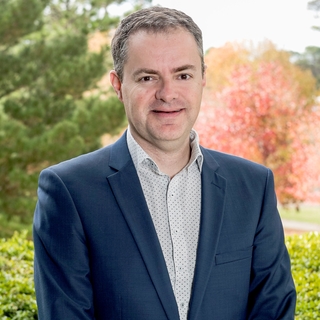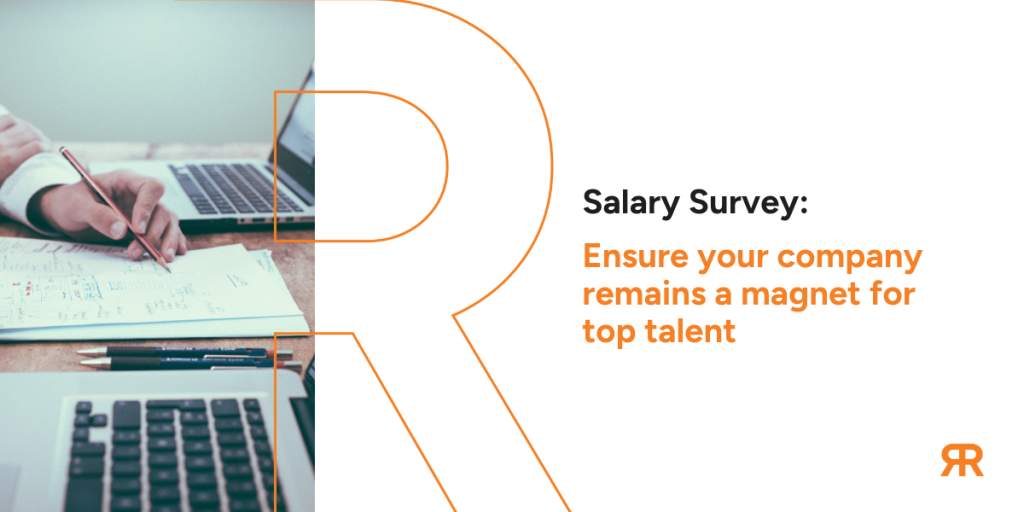
The Pro IQ interview series: Paul Hodgson, NERA
Resourceful Pro recently down with Paul Hodgson, GM Innovation & Stakeholder Engagement at NERA in Brisbane. We…
Resourceful Pro recently down with Paul Hodgson, GM Innovation & Stakeholder Engagement at NERA in Brisbane.
We discussed all things Energy including the rapidly changing nature of the sector, future growth opportunities, the transition to renewables, and the role that NERA plays in all of this.
Paul Hodgson is General Manager Innovation and Stakeholder Engagement East Coast for National Energy Resources Australia (NERA), an organisation working to bring the best of the energy resources sector together to drive productivity, collaboration and global competitiveness.
RP: Paul, what are the priorities & initiatives of NERA?
PH: NERA is one of six Industry Growth Centres (IGCs) established by the Federal Government to drive innovation, collaboration and global competitiveness in our national priority sectors. With responsibility for Oil, Gas and Energy Resources, NERA has developed a ten-year Sector Competitiveness Plan, which we review and update annually. Within our SCP, there are eight knowledge priorities including “enhance skills and business capabilities to support automation and digitisation” and “build talent and enable effective collaboration and innovation”. Technology is moving rapidly, as it is in most sectors, with data analytics as well as artificial intelligence and machine learning increasingly being applied in the Oil, Gas and Energy Resources sector.
NERA has directly funded about forty collaborative projects and other initiatives such as the National Energy Literacy Framework
RP: Can you tell us about NERA’s involvement in the renewables sector?
PH: Another one of NERA’s knowledge priorities is “pursue a sustainable and low carbon energy future”. The global energy transition represents both a challenge and an opportunity for Australia. As a global energy powerhouse with exports comprising two-thirds of our energy production, 98.2% of Australia’s total energy production in 2016/17 was is in coal, oil & gas and uranium. Fortunately for Australia, we are also endowed with significant potential renewable resources such as wind, solar, wave, tidal and geothermal energy as well as the minerals used to make batteries, wind turbines, solar panels, electric vehicles and other rapidly emerging technologies.
Traditional energy producers are high users of energy, so we are helping them to become less energy intensive and reduce their carbon emissions as a result. One such project we have supported is the development and trialling of a coal seam gas (CSG)-solar hybrid energy system for well-sites.
We have also invested in the establishment of an Australian Ocean Energy Cluster, supporting and growing our offshore wind, tidal and wave energy technology sector.
NERA is also contributing to the national strategy to develop a hydrogen economy, and particularly how we can capitalise on our strong global position to become an exporter of green hydrogen (hydrogen created from renewable sources) and associated technologies.
There are a number of Federal Government funding initiatives for renewables such as ARENA, CEFC and a number that we also help facilitate applications from our sector for such as Cooperative Research Centres and CRC-Projects, and the Australian Research Council Industrial Transformation Program.
RP: How do you see the energy sector evolving over the next 10 years?
PH: If I knew for sure I could make a lot of money!
Given the price trends, I would expect to see the position of large scale wind and solar strengthening and we’ll be hearing more about batteries and storage technologies as we seek to smooth out the intermittent nature of wind and solar. With Australia being a large producer of the minerals used in batteries, this is a significant opportunity for us.
Global energy demand will continue to grow, particularly in Asia, which is an opportunity for us as a net energy exporter. However, with increased global carbon emissions in 2018, I think we’ll also see a resurgence in energy efficiency efforts and more discussions around the circular economy and life cycle assessment. It is challenging to transition to low carbon energy sources but even more so with ever increasing energy production.
Hydrogen, electric vehicles, peer-to-peer energy markets, wave and tidal energy, and micro-grids are all likely to break through into the mainstream in Australia by 2030.
There is significant transition and disruption happening, but Australia is well placed to provide new energy sources and technologies. An orderly transition is key, but we don’t need to fear the future.
I’d also like to see Australia increasingly known globally for exporting energy services, knowledge and technology. Lower energy costs in Australia could also boost onshore manufacturing and the local generation of new products off the back of low carbon energy.
RP: Describe the scale of demand for clean energy and the near-term opportunities.
PH: Demand for clean energy is coming from the public and industry, initially fuelled by incentives for renewables but also increasing cost competitiveness. Australians are renowned for their uptake of new technologies and millions of rooftop PV systems are now deployed in domestic settings with people converting for a range of reasons – control, incentives, cost of energy, and a desire to contribute to a low carbon economy.
Creating energy storage will become more important for renewables to negate the issues of the sun not shining 24/7 and the wind not blowing every day. New innovations will capitalise on renewable opportunities globally (best solar intensity, wave resource and wind).
RP: How does the consumer figure in all this?
PH: Consumers are used to large, government-regulated energy generators and regular energy bills. The system is becoming more complex and costs are changing. Artificial Intelligence will eliminate direct interaction and save consumers time. A smart meter will know when we’re home, when we’re out and how we use energy, deciding how much energy may be sent to our neighbour or back to the grid. Power Ledger is a good example. Energy prices will come down because of those efficiencies.
RP: What are the talent requirements, jobs and career opportunities associated with the transition?
PH: The energy sector is ripe for opportunities for talented people, new ideas and investment. The industry is very technology driven. It can have you working on amazing data analytics and cutting-edge technology. A lack of data scientists is a notable shortage but there are some exciting initiatives around upskilling geoscientists and creating hybrid competencies.
Instead of a degree or certificate being the end of your education, it’s now about life-long learning and workers will accumulate a virtual ‘passport’ with different stamps for different skills. As technologies, tasks and occupations change, workers will need to constantly upskill.
Beyond the textbook, employability will be about networking, associations, courses and experiences as well as a contextual understanding of a role – such a mutual knowledge of engineering, business and data science.
The challenge will be ensuring a strategic connection between data and business function. A lot of companies still work from experience and gut feel so there are cultural factors in completing a full data value chain. How do experienced people react to seeing data that conflicts with what they have been doing?
RP: How do you see Australia’s progress compared to the rest of the world?
PH: Australia is looking to be a significant player in a global hydrogen economy and there is excitement about the potential opportunities. A lot of work has been undertaken in the past 12 months by the CSIRO and a National Hydrogen Task Force led by the COAG Energy Council and by the end of 2019, we’ll have a National Hydrogen Strategy. Various States are also developing their own plans such as the Queensland Hydrogen Industry Strategy.
While there is interest from China, Japan, South Korea and Europe, global markets are not yet there. Major players are investigating the potential for exporting hydrogen, but I think we have to embrace it domestically through hydrogen fuel buses and power generation, for example, rather than relying solely on an export market.
Things will move really quickly in the next decade. ARENA has commissioned a Networks Renewed Project on large scale solar and interaction with the grid, and innovative smart grids are being developed. Australia’s Clean Energy Finance Corporation is the world’s largest green bank and has made billions of dollars in investment locally.
RP: The Australian solar & wind market is growing at a rapid rate. What is the current state of play?
PH: There’s a really large pipeline of projects: the Queensland government is establishing CleanCo, a publicly owned clean energy generator that will compete with the other government generators and other solar and wind farms. New business models are happening coming alongside new technologies, resulting in renewables becoming an unstoppable force in the transition of the energy sector. Ultimately, the grid will become maxed out so there’s a lot of discussion around how that can be addressed.
RP: Your high-level view of where things are in regard to electric vehicles in Australia and where they’re headed?
PH: Significant innovation and investment is being driven by car manufacturers for EVs and hydrogen-fuel cell powered vehicles. Consumers will ultimately buy from the choice that is offered in the market and the increasing range and scale will drive competitiveness of EVs. Increased investment in infrastructure such as charging stations will grow as our national EV fleet grows.
Beyond EVs, the progress of autonomous vehicles is fascinating. I think we will look back in 30 years and tell a new generation how we had over 100 000 individual decision making drivers, in vehicles over one tonne, at 110 km/hr within metres of each on the M1 each day. They will think we were crazy!
In reality we are already being drip fed autonomy – automatics over manual, cameras and sensors and park assist. Autonomous vehicles are less of a technological issue and more of a consumer behaviour and insurance/servicing issue. Eventually cars might not even look like cars, more like a small lounge room. Some may even have coupling – decoupling modes like train carriages.
RP: Finally, tell us about your hopes for the next couple of years.
PH: I want to see a more collaborative vision across the industry, and across states, maximising energy opportunities rather than resources infighting. I don’t think it helps that people are seen as pro- or anti- a particular energy source. A more productive conversation would help secure talent, investment and consumer acceptance and help Australia maintain and grow its position as a global energy powerhouse.
Related Blogs
Salary Survey: Ensure your company remains a magnet for top talent
In today’s dynamic business landscape, staying competitive in the job market is essential. It is imperative to ensure that your employees are not only fairly compensated but also that your…
The Pro IQ Interview Series: Critical Minerals Association Australia, Namali Mackay
Our latest feature in the Pro IQ Interview Series is a conversation with one of the Founders and Managing Director of the Critical Minerals Association Australia, Namali Mackay. Here she describes…
Unleashing Potential: The Significance of Assessing Candidates’ Behavioural Competencies
In today’s fiercely competitive job market, executive search consultants face the challenging task of identifying individuals who not only possess the right skills and qualifications but also demonstrate the essential…
Who are your most irreplaceable employees?
Who are your most irreplaceable employees? – the Importance of Organisational Network Analysis In today’s fast-paced business world, retaining key employees is a top priority for organisations. But, while…




